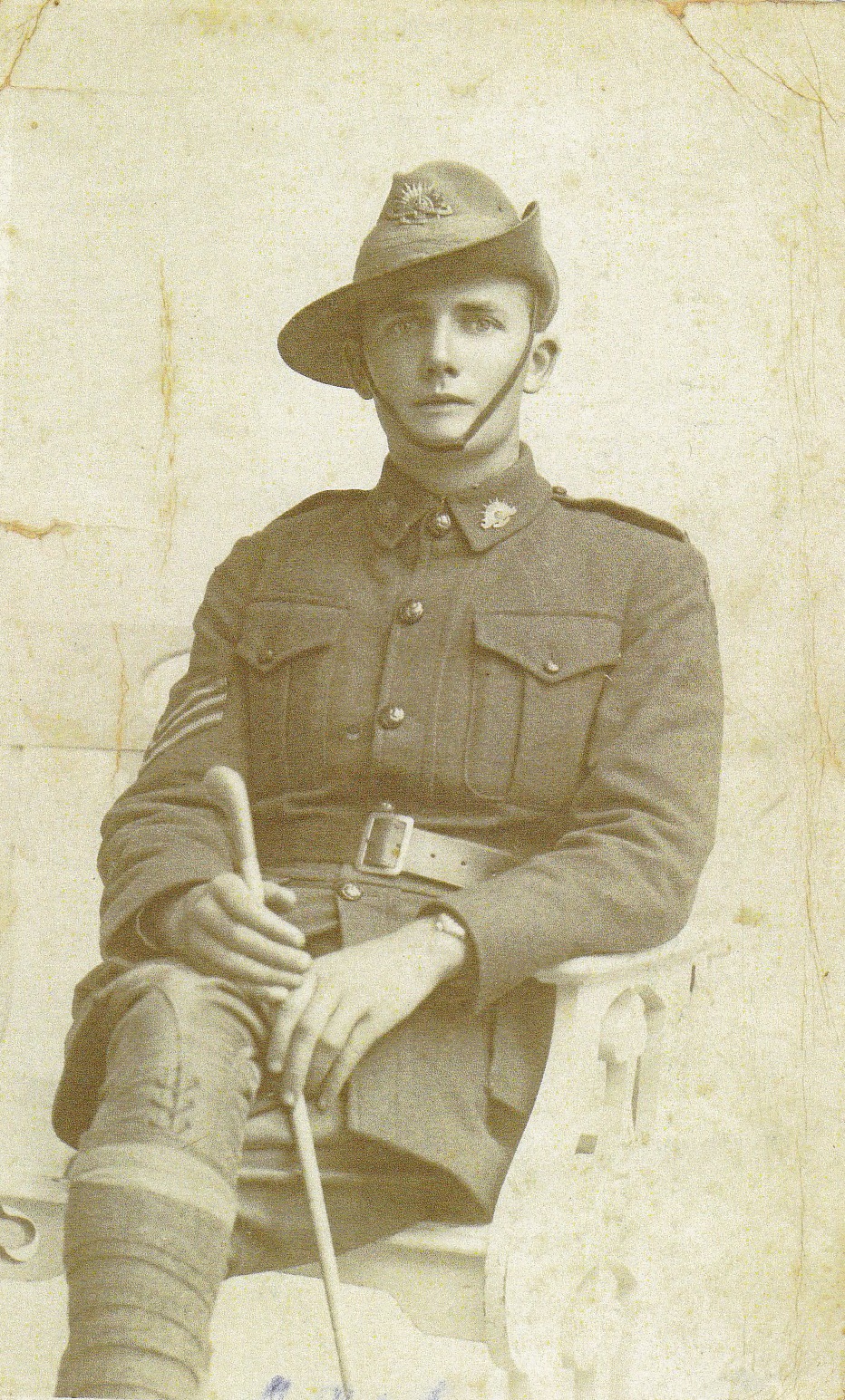Sgt
Phillip Schubert
Information about birth
|
Date of birth: 31/12/1892 |
|
Place of birth: Singleton, New South Wales, Australia |
General information
|
Profession: Railway Employee |
Army information
|
Country: Australia |
|
Force: Australian Imperial Force |
|
Rank: Sergeant |
|
Service number: 1242 |
|
Enlistment date: 11/01/1916 |
|
Enlistment place: Maitland, New South Wales, Australia |
|
Units: — Australian Infantry, 34th Bn. (Last known unit) |
Information about death
|
Date of death: 13/10/1917 |
|
Place of death: Tyne Cottage, Passchendaele, Belgium |
|
Cause of death: Killed in action (K.I.A.) |
|
Age: 24 |
Cemetery
|
Tyne Cot Cemetery Plot: XXVII. Row: D. Grave: 9. |
Distinctions and medals 3
|
1914-15 Star Medal |
|
British War Medal Medal |
|
Victory Medal Medal |
Points of interest 3
| #1 | Place of birth | ||
| #2 | Enlistment place | ||
| #3 | Place of death (approximate) |
My story
At the end of September the 34th Battalion, as part of the 3rd Australian Division was transferred to Belgium where they found themselves in the middle of the Battle of Passchendaele. On 12 October 1917 the battalion carried out a disastrous attack on Passchendaele itself. The battalion’s jumping off line was what is now Tyne Cot Cemetery, and its final objective lay just beyond Passchendaele village. The attack quickly went awry and the Austalians only managed to seize a small piece of ground. Losses were heavy, however. The jump off line was situated near Tyne Cot Cemetery, up to Waterfields. The Battalions objective was the red line, an intermediate objective in the attempt to capture the village of Passchendaele. At 5.25 a.m., the barrage came down. It was very weak and it was difficult to determine which was the own barrage and which was German shell fire. Another reason of the slow advance, was the condition of the ground.The order of attack was as followed: “A” Company on the right, “B” Company in the centre, “C” Company on the left and “D” Company in reserve. As the attack continued, it was decided to send all the men of the 34th Battalion to capture the Blue Line and the Green Line. The latter was the final objective. The battle caused heavy losses and it was decided to send all the men of the 34th Battalion in an attempt to take control over the other two objectives. They reached the second objective, but suffered from German machine gun- and shell fire. At 3 p.m., the Battalions received instructions to hold the line at all costs. Eventually a new line was constructed, as the Battalions had suffered heavy casualties, from Defy Crossing on the Yper – Roulers Railway to the direction of Waterfields. On the 13th of October 1917, the Battalion was still in the frontline.
According to official sources, Sergeant Phillip Stanley Schubert was killed on 13 October 1917. The chaplain of the 34th Battalion, John Calder, wrote a letter to Schubert’s mother informing her: ‘So far as I can make out, he was killed instantaneously by a machine-gun bullet during the first or second day of the attack. As we had eventually to ritire from the positions we captured on that occasion, it was impossible for me to bury his body, but that task would be reverently carried out by the Canadian troops who relieved us in that sector’. Schubert may have been killed on 12 October during the attack or on 13 October while holding the line. In 1920 his remains were found on the site of Tyne Cot Cemetery (28. D. 17. a. 40.50) and he was reburied only a hundred meters from where he was found.
According to official sources, Sergeant Phillip Stanley Schubert was killed on 13 October 1917. The chaplain of the 34th Battalion, John Calder, wrote a letter to Schubert’s mother informing her: ‘So far as I can make out, he was killed instantaneously by a machine-gun bullet during the first or second day of the attack. As we had eventually to ritire from the positions we captured on that occasion, it was impossible for me to bury his body, but that task would be reverently carried out by the Canadian troops who relieved us in that sector’. Schubert may have been killed on 12 October during the attack or on 13 October while holding the line. In 1920 his remains were found on the site of Tyne Cot Cemetery (28. D. 17. a. 40.50) and he was reburied only a hundred meters from where he was found.
Sources 4
|
34th Australian Infantry Battalion, (Australian War Memorial, Campbell (AWM), AWM4 23/51/12). https://www.awm.gov.au/collection/C1338583 Sources used |
|
E. Beaver and J.W.G. Meldrum., A Short History of the 34th Battalion, AIF, (Carlton, Illawarra Press, 1957), pg. 22-24. Sources used |
|
First Australian Imperial Force Personnel Dossiers, 1914-1920, (National Archives of Australia, Canberra (NAA), B2455, SCHUBERT P). https://recordsearch.naa.gov.au/SearchNRetrieve/Interface/SearchScreens/NameSearch.aspx. Sources used |
|
McCarthy C., The Third Ypres Passchendaele. The Day-by-Day Account, (London, Arms & Armour Press, 1995), pg. 113-115. Sources used |
More information 4
|
Commonwealth War Graves Commission Database https://www.cwgc.org/find-records/find-war-dead/casualty-details/464548 |
|
Lives of the First World War (Imperial War Museum) https://livesofthefirstworldwar.iwm.org.uk/lifestory/7579410 |
|
The AIF Project (UNSW Canberra) https://aif.adfa.edu.au/showPerson?pid=268174 |
|
Namenlijst (In Flanders Fields Museum) https://namenlijst.org/publicsearch/#/person/_id=31ea8ccc-5662-440c-ba42-c47b76b43c79 |
